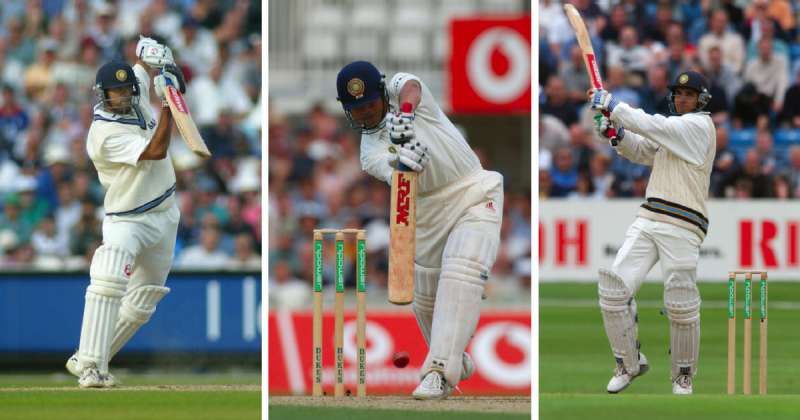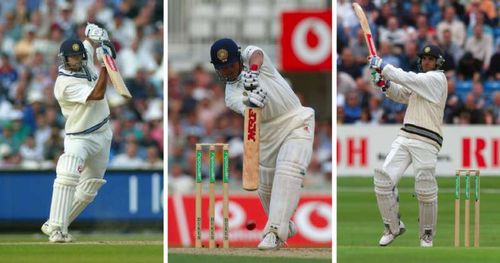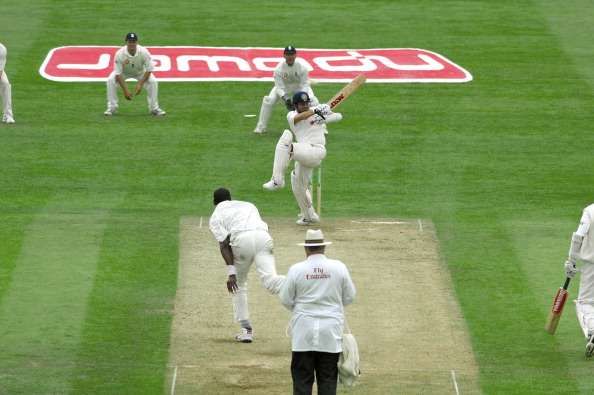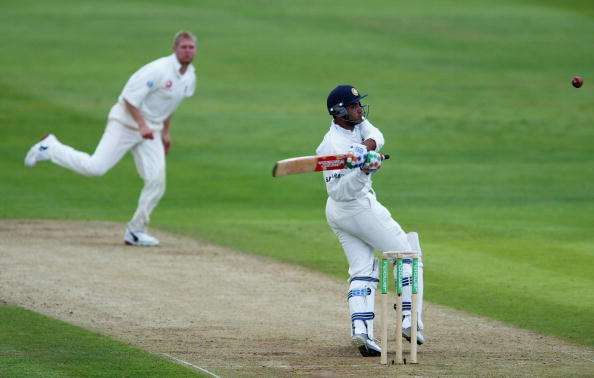
SK Flashback: The golden trio comes good together against England in 2002
India vs England
22-26 August 2002
Headingley, Leeds
Heavy gray clouds pervaded the skies, giving a murky feel to the entire ground. The feeling was accentuated by India’s recent showing in Tests. The NatWest triumph had injected passion in the team, yet, the red cherry demons were yet to be slain.
The first Test of the series was a convincing win for the hosts, and the subsequent match, albeit extracting a much better performance from India, ended in a draw. A win remained elusive for Ganguly’s troops. Also, a contract dispute, a three-sided struggle between the players, ICC and BCCI had bothered the players before the series.
The dark clouds did deliver a silver lining for India at Headingley, with the trio of Rahul Dravid, Sourav Ganguly and Sachin Tendulkar coming good together, and in convincing fashion. Dravid scored a century on day 1, and Tendulkar and Ganguly followed suit the following day.
Dravid starts off in style
India decided to go for the staid Sanjay Bangar instead of the free-flowing Wasim Jaffer at the top. Sehwag, India’s other opener, couldn’t contribute much, falling to an uncharacteristically slow innings of 8. In came Rahul Dravid, thriving in good form after a confidence boosting century at Nottingham in the previous Test.
The English pace attack bore a slightly different look from the initial two Tests. Simon Jones, for whom success and injuries went hand in hand, made way for Steve Harmison in the second Test, and Alex Tudor in the third. The pitch was a damp surface, the overcast skies were ideal for swing bowling, and the bowlers had their tails up, despite India showing substance with the bat in their 2nd innings in the Trent Bridge Test.
Dravid got the perfect foil in Sanjay Bangar, a determined batter with a dour yet valiant mode of play, the ideal second-fiddle to a man in a rich vein of form. As Dravid took his time to settle, not letting his guard down but playing his shots, the bowling attack took a backseat.
In the twilight of his career in 2011, Dravid cut down on his feet movement, maneuvering the bowling and playing with angles and deviations. In 2002 however, Dravid was in prime form, and the drives were preceded by a confident stride forward, a clear indication of a batsman being on top of his game. Hoggard’s over-pitched deliveries were dispatched to the covers, Flintoff angled it in (a tad too much), and Dravid invariably glanced and flicked them off his pads for a boundary to midwicket or square leg, and the unthreatening Ashley Giles was never allowed to settle. A well-compiled 148 gave a perfect platform for the next-change pair of Ganguly and Tendulkar to make merry.
Sachin makes merry
Sachin came in after Bangar’s watchful knock, and gave Dravid company till the end of the first day. Post Dravid’s departure, Sachin changed gears, and in the company of Sourav Ganguly, converted the day into a one-day match.
You could not demarcate Sachin’s batting within a particular domain. There were multiple facets, and different dimensions. In Leeds that afternoon, the dominating Sachin had switched on, and refused to hand the baton to a more laconic Sachin.
Therefore, the booming drives, the ruthless cuts and some unconventional yet highly effective shots made for a nice little slideshow. Hoggard and Flintoff kept feeding him the over-pitched deliveries, and the Mumbaikar was true to the task, every single time.
Special treatment was reserved for a particular Andy Caddick, for whose bowling Sachin developed a habitual liking that extended till the World Cup the following year. Caddick was handled with disdain, and one particular shot stood out, where the Master danced down the pitch and launched the fast bowler to cow-corner, an unflinching, unrestrained hoick that travelled yards into the stand. Yet, Sachin was not the only one doing damage on day 2.
Sourav Ganguly borrowed some of Sachin’s fervour and mixed it with his own. India were well-placed at 335-3, when Ganguly came in to add a dash of spice and complete the preparation.
Ganguly ends it with a flourish
It is a well-documented fact that Ganguly has a penchant for dominating left-arm spinners. Ashley Giles’ bowling was brushed aside by Ganguly’s nimble footwork ( a trademark quality that Dada used to reserve for the spinners ). He squeezed the life out of Giles’ spin: cutting, pulling and driving in equal measure. Wearing his trademark sleeveless sweater as he came in, Ganguly started with his favoured off-side, using the pace of the quicks and push-driving the loose balls to the fence. He adopted a different mode when he crossed 50, making room and creaming the effective turned listless set of bowlers to complete the Indian batsmen’s domination.
Against Caddick, Ganguly compulsorily made room, giving himself enough width to thwack the bowler on both sides of the wicket. The Indian captain took almost half his runs out of the left-arm spinner, and also targetted Andy Caddick, against whom he garnered 32 runs off the 36 balls he faced.
It was the only time that the trio of Rahul Dravid, Sachin Tendulkar and Sourav Ganguly each scored a century together in a Test innings.


